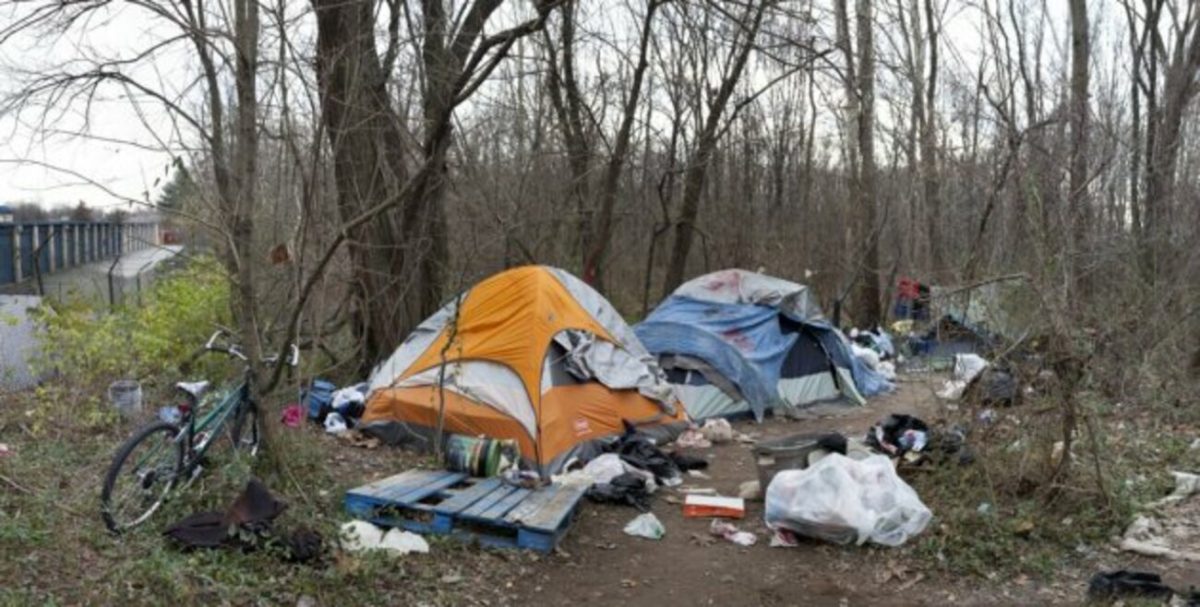
According to a 2023 report by the City of Baltimore Mayor’s Office of Homeless Services, approximately 1,500 people were without homes on a typical night in Baltimore. Around 73% of Baltimore’s unhoused population were Black Americans, incongruous to the greater 63% of African Americans comprising the city’s population.
Homelessness is both a cause and an effect of poorer health outcomes. Affected people are at a higher risk of tuberculosis and HIV. They have a greater rate of mental health issues, like substance abuse or depression, than people with stable housing. While they generally have a higher duration of hospital stays, they have a lower chance of receiving sustained medical care or important medications. It’s worth noting that data collection of these inequities is prone to error, as the Department of Housing and Urban Development’s homeless population count relied disproportionately on volunteer counts, omitting significant numbers of individuals who stay in less conventional or visible spaces. The number of people who experience episodic homelessness, or transitioning in and out of homelessness, or situational homelessness due to factors like unemployment or domestic violence, is often underestimated.
Despite these inaccuracies, disease and mortality rates are rife among Baltimore’s unhoused community. Patrick Winguth, a harm reduction worker at the nonprofit Charm City Care Connection, emphasizes the value of harm reduction in minimizing these rates. Understanding that reporting a history of drug use to hospital staff has led to mistreatment and discomfort among individuals seeking help, he says that the nonprofit will not force anyone into care, but will provide an open door for people to fulfill basic needs and guidance in finding their next step without judgment and administered by people who may have had similar experiences.
Several other determinants make certain communities more susceptible to homelessness. Around 22% of Baltimore residents live below the poverty line, and cannot afford stable and secure housing or access to job training or healthcare that can put them back on their feet. Baltimore’s history of racial segregation, including racial zoning in the early 20th century, enforced residential segregation. In Buchanan v. Warley, the Supreme Court struck down racial zoning because it inhibited white homeowners’ right to sell to anybody. Although the court’s ruling ended racial zoning in a legal sense, it persisted through private contracts, restrictive covenants used by neighborhood associations, and municipal zoning like single-family residential zoning, which restricts housing supply, and industrial zoning that forces low-income people into loud or polluted areas that deplete their health and maintain the cycle of poverty.
As of 2025, Baltimore’s homeless population has decreased by 30% over the past five years. However, significant challenges continue to face the city’s most vulnerable. Initiatives, including a new program helping unhoused individuals obtain state-issued IDs, allow them to access housing and other vital resources. The Shelter Hotline is a centralized system that quickly enrolls individuals at emergency shelters, improving their short-term conditions. The Journey Home Plan seeks a more systemic approach, highlighting the need for increased affordable housing, enhancing outreach and standards of care, further developing shelters and transportation, creating a robust referral system to bolster access to employment or economic opportunities, and rectifying policies that perpetuate racial disparities.
Sources:
A Brief History of Racial Zoning and How to Reverse the Lasting Effects of Housing Discrimination – Urban Land Magazine
Key Strategies | The Journey Home
Unhoused and uncounted: Homelessness and mortality rates in Baltimore – The Johns Hopkins News-Letter
What is the homeless population in Baltimore City? – Geographic Pedia